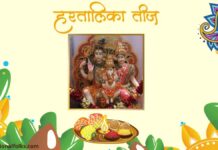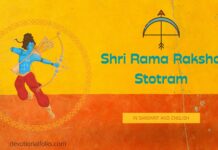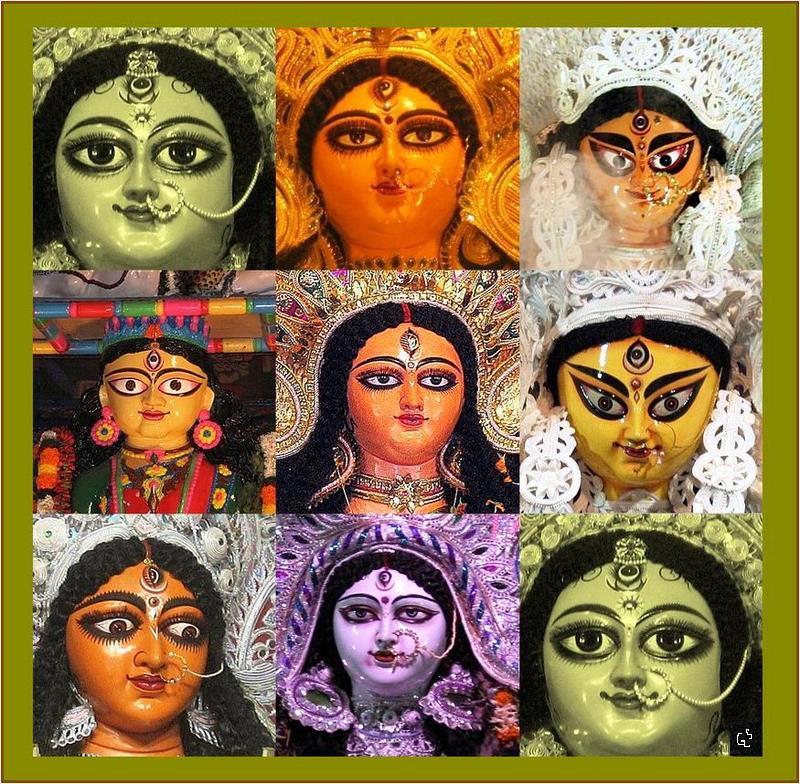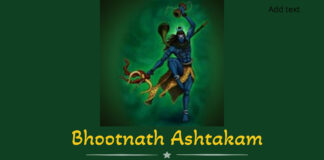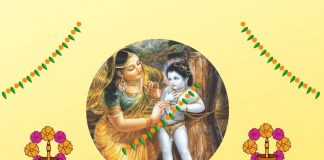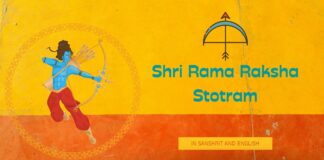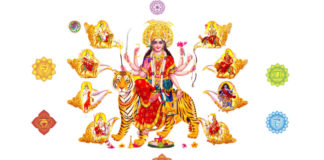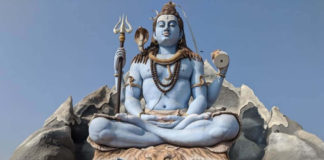Bhakt Prahlada, The great devotee of Lord Vishnu recited Sri Narasimha Kavacham. Brahamnad Puran have a mention of Narsimha kavacham mantra.
Narsimha Kavacham is a...
India, which is Bharat, is famous for diversity which is not only reflected in culture and traditions but how different festivals have been celebrated...
Sri Jagannath Ashtakam consists of eight verses in praise of Lord Jagannath. Before reading the Jagannath Ashtakam lyrics, let’s take a look at who...
Sri Ram Raksha Stotra is a Sanskrit hymn to praise Lord Rama. As per ancient scriptures, Reciting Sri Ram Raksha Stotra in a proper...
Bhavani Ashtakam
Jagat Guru Adi Shankaracharya has penned down Bhavani Ashtakam भवान्यष्टकं. The beautiful composition dedicated to the feet of Maa Bhagvati. This strota Bhavani...
Navratri is being celebrated all across the Indian subcontinent and in Hindu communities the world over with full enthusiasm. The nine days of Chaitra,...
Fasting in particular Ekadashi is getting popular over the last couple of years all over the world. You may have thought about why Ekadashi...
Narak Chaturdashi or Choti Diwali is celebrated one day before Diwali. It’s the second day of the five-day-long festival of Deepavali. Here we have...
Diwali or Deepawali is the most iconic festival of Hindus celebrated across the length and breadth of the country. This year, Diwali will be...
Dhanteras or Dhantrayodashi is the first day of the five-day-long festival of Diwali. This time It is falling on 13th November. Here we have...
Papankusha Ekadashi vrat falls every year in the Shukla paksha of Ashwin month, a day after Vijayadashami. This year it will be observed on...
Aarti Kunj Bihari ki Lyrics in Hindi
आरती कुंजबिहारी की,श्री गिरिधर कृष्ण मुरारी की ॥आरती कुंजबिहारी की,श्री गिरिधर कृष्ण मुरारी की ॥
गले में बैजंती माला,बजावै...
Om Jai Jagdish Hare is the most popular aarti among all Hindus. Every devotee read this aarti to conclude worship. This aarti was composed...
Bhoothnath Ashtakam is a beautiful verse about Lord Shiv. Lord Shiv is devadhidev, which means Lord Shiv is the God of everyone who never...
Damodarashtkam is a beautiful hymn about the childhood pastimes of Lord Krishna. Before explaining the importance of Reading Damodar ashtakam lyrics in Kartik month,...
Sri Jagannath Ashtakam consists of eight verses in praise of Lord Jagannath. Before reading the Jagannath Ashtakam lyrics, let’s take a look at who...
Sri Ram Raksha Stotra is a Sanskrit hymn to praise Lord Rama. As per ancient scriptures, Reciting Sri Ram Raksha Stotra in a proper...
Fasting in particular Ekadashi is getting popular over the last couple of years all over the world. You may have thought about why Ekadashi...
Diwali or Deepawali is the most iconic festival of Hindus celebrated across the length and breadth of the country. This year, Diwali will be...
All Vishnu devotees observe Dev Uthani Ekadashi vrat all across India and abroad. Read the article to know about Dev Uthani Ekadashi Vrat katha,...
Shri Sankat Nashan Ganesh Stotram is a verse form Narad Puran. In this strota , Narad Rishi is praising and describing the attributes of...
जय श्री गणेशाये नमः
In Hindu religion Lord Ganesh is most beloved and famous God and worshipped before invoking any God or beginning any ceremonial...
The beautiful composition Sri Nand Nandanastakam is dedicated to Lord Krishna is an embodiment of beauty, love, compassion, and duty.
Ashtakam contains eight verses in...
Navratri is being celebrated all across the Indian subcontinent and in Hindu communities the world over with full enthusiasm. The nine days of Chaitra,...
What exactly Bhajan is? Do you ever wonder where it has been originated? What benefits do we derive from listening to bhajan? Are Bhajans...
Shri Shiva Panchakshar Strotam
Composed by great Saint and poet Adi Shankaracharya, Shiv Panchakshar strotam is a boon for devotees of Shiva. Its recitation is...
History and Importance of Raksha Bandhan
Raksha Bandhan is one of the famous and popular festivals of India. Raksha Bandhan means bond of protection. It...
Maryada Purshottam Sri Ram has a very special place in the hearts of Hindus all over India and other neighboring countries. Many verses have...
Shri Hanuman Chalisa is the most read and popular hymn amongst millions of Hindu. Hanuman is the greatest devotee of Lord Rama. Goswami Tulsidas...


